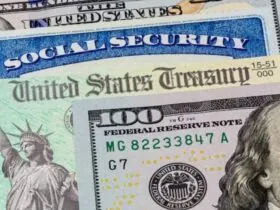An ultra-rare 1934 $500 bill featuring a portrait of President William McKinley is making headlines as it heads to auction in England. This exceptional piece of U.S. currency is poised to fetch significantly more than its face value, reflecting its rarity and historical significance. Below, we explore the details of this unique banknote and why it is considered a treasure for collectors.
A Glimpse into History: The 1934 $500 Bill
This Article Includes [hide]
The 1934 $500 bill is part of the series known for its elegant designs and the significant portraits of U.S. leaders. In this case, the bill prominently features President William McKinley, the 25th president of the United States. McKinley, who served from 1897 until his assassination in 1901, is remembered for leading the nation through the Spanish-American War and overseeing the annexation of the Philippines, Guam, and Puerto Rico.
The Value of the 1934 $500 Bill
When it was first issued, the 1934 $500 bill was an impressive sum. Back in 1934, the equivalent of $500 would be worth about $11,600 today, making it a substantial amount of money for any individual to carry around. In fact, it was exceedingly rare for people to possess such high-value banknotes during the era, further adding to its allure for collectors and historians alike.
While this bill is still considered legal tender in the U.S. today, it is part of a class of notes that are no longer in circulation. The U.S. government ceased issuing high-denomination bills such as $500, $1,000, $5,000, and $10,000 in 1969, though some of these bills remain in circulation among collectors.
Unredeemed and Uncommon: Why This Bill is So Special
One of the most remarkable aspects of this particular $500 bill is that it has never been redeemed. According to William Hayward, a coin and banknote valuer at Hansons Auctioneers, this is rare because many high-denomination bills were often used in large transactions and quickly spent or redeemed. The fact that this bill remains unredeemed adds to its uniqueness and makes it even more desirable for collectors.
The rarity of such notes cannot be overstated. Since the Bureau of Engraving and Printing stopped producing $500 bills in 1945, this bill serves as a testament to a time when these large denominations were common. As a result, any uncirculated or well-preserved examples are considered treasures in the numismatic world.
The Auction: A Strong Investment Opportunity
Hansons Auctioneers, located in the UK, will offer this rare $500 bill at auction on Wednesday. The guide price for the banknote is estimated to be between $1,000 and $1,260. While this is well below the bill’s face value, the auction price could be much higher, reflecting its rare status and demand among collectors.
The auction comes at a time when the market for rare coins and banknotes is experiencing significant growth. The sale of such items regularly achieves record-breaking results, underscoring the increasing interest in rare and historical currency as an investment.
Why Collecting Rare Currency is on the Rise?
The growing popularity of rare banknotes and coins is part of a broader trend in the collectibles market. As collectors seek out items of historical importance, particularly those tied to significant events or notable figures, rare U.S. currency has become an increasingly valuable asset. The scarcity of high-denomination bills like the $500 note only adds to their appeal, making them sought-after items for both seasoned collectors and newcomers to the hobby.
Conclusion: A Timeless Collectible
The 1934 $500 bill is more than just paper money; it is a piece of history. With its rare McKinley portrait, unredeemed status, and the intriguing backstory of high-denomination bills, it is a collector’s dream. As this banknote heads to auction in England, it promises to make an impact on the world of numismatics, serving as a reminder of a time when large denominations were part of everyday transactions and offering insight into the changing landscape of currency over time.
Also Read:











Leave a Reply